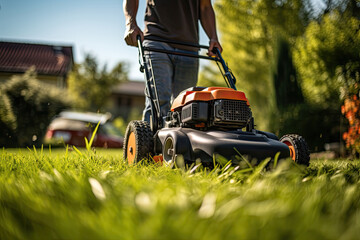Choosing the right towing service is important for your safety and peace of mind. Towing companies charge differently and have different rates, but they are all able to help you get out of a bad situation safely.

Western Towing services are available 24/7 and will work to reach you quickly. Their fast response will minimize stress and reduce the risk of further damage to your vehicle or accident.
When determining the capacity of a tow vehicle and its ability to safely haul a trailer, it is important to keep in mind the Gross Vehicle Weight Rating (GVWR). This standardized measurement set by manufacturers is what determines how much a vehicle can weigh when fully loaded. Exceeding this limit can damage the frame, impair braking abilities and raise safety concerns.
Curb weight is the amount a vehicle weighs without passengers or cargo. This number includes the vehicle itself and essential fluids, such as oil, brake fluid and wiper fluid. In some cases, a vehicle’s curb weight will be listed on the driver’s door or in its owner’s manual. Payload capacity is the amount of cargo that a vehicle is rated to carry in its cabin and bed. This will not exceed the GVWR, as exceeding this limit can cause damage to the vehicle’s suspension and other critical systems.
A trailer’s GVWR, on the other hand, will take into account any cargo and towing weight added to its inherent curb weight. When calculating the maximum capacity of a tow vehicle and its trailer, the manufacturer will include both the trailer’s GVWR and its own inherent curb weight in the calculation. Taking these measurements together will ensure the tow vehicle and its attached trailer never exceed their respective GVWRs.
If a tow truck is used to haul a trailer that is too heavy or contains an uneven load, the operating company can find itself in serious legal trouble. Not only can this put anyone on the road in danger, but it can also compromise the durability of the towing vehicle and its components, leading to premature wear and tear.
A good way to prevent this from happening is by regularly checking your vehicle’s GVWR and by maintaining its components. A professional can help you get a full understanding of the capabilities of your towing vehicle and its ability to safely haul a loaded trailer.
Towing Capacity
Whether you’re hauling a boat for summer fun or moving from one home to another, it’s important to understand your vehicle’s maximum payload and towing capacity. Exceeding these limits puts undue stress on your truck and trailer and could lead to costly mechanical failures or dangerous accidents.
It may seem complicated, but calculating your towing capacity is actually pretty straightforward. The key is to understand the difference between a vehicle’s GVWR, its maximum towing capacity and its load rating.
GVWR is the gross vehicle weight rating and it’s what you see printed on your car’s door sticker. It’s the maximum amount of weight that the vehicle can support while not moving, including occupants, fluids and cargo. Unless your vehicle is equipped with a fifth wheel hitch, GCWR does not include the weight of a trailer or its cargo.
Towing capacity, on the other hand, is what your vehicle’s manufacturer says it can tow when a trailer is attached. It’s calculated using your vehicle’s full GCWR, which includes the chassis, body and equipment weight, less the weight of the driver and passengers.
Load rating is based on your vehicle’s dry weight, which excludes the weight of fuel, oil and other liquids, but does include the weight of a trailer and its cargo. GCWR is a more accurate way to calculate the total weight of your vehicle and trailer, taking into account all the variables that go into a loaded trip.
Understanding the differences between payload, GCWR and towing capacity is important before hauling heavy loads. The safety of you and those on the road depends on it. Exceeding a towing limit can damage your vehicle’s engine, transmission and other components. It can also put unnecessary strain on your trailer, causing it to wear out faster. Fortunately, it’s easy to keep track of your towing capacity so you don’t exceed its maximum limit. Just make sure to subtract your trailer’s GCWR from your rated GVWR and always check your towable weight before hitting the road. Also, be sure to take into account your trailer’s pin weight, which is the actual pressure exerted on the hook at the end of your hitch.
Dead Weight
Dead weight is the maximum amount of weight that your vehicle can tow when using a basic ball hitch trailer coupling. The force of the trailer’s added weight is localized on the rear axle of your towing vehicle. Exceeding a towing vehicle’s dead weight rating can cause the front of the trailer to leave the ground, which could be dangerous on highways and other busy roads.
DW is also known as dry bulk cargo capacity. This term is used in comparison to the traditional measurement terms gross register tonnage (GRT) and net registered tonnage (NRT). It is not to be confused with a ship’s displacement, which includes its own weight as well as water displaced.
A vessel’s deadweight is defined as its loaded weight minus the empty weight of the ship. It is made up of a variety of things such as oil fuel, water, stores, lubricating oil, and crew and effects. Only the cargo component of the deadweight earns revenue, so other items are kept to a minimum.
Another important factor when towing is the internal pressures of a piping system. For example, gas or steam pipes may have to operate under a certain test pressure for safety reasons. This is considered a tributary load to the deadweight of a pipe or tube itself, and is usually determined by conducting a hydrostatic test.
For your safety, you should always redistribute the weight of your trailer and its cargo before driving on a busy road. An uneven distribution of the trailer’s weight can cause the hitch to rise, which can put unnecessary stress on the tow bar. This could lead to the trailer coupling falling off the tow bar. This would require the assistance of a towing service and could potentially result in damage to the truck and the trailer.
Towed Weight
Towing a trailer that is too heavy can put your tow vehicle and trailer at risk of mechanical failure. It can also cause the vehicle to drive poorly, resulting in poor handling and increased risk of accidents. This is why it is important to understand the towing capacity of your vehicle and the weight of your trailer when traveling on the road.
Generally, the GVWR (gross vehicle weight rating) of your tow vehicle is specified in the owner’s manual and refers to the maximum allowable weight of your truck without adding passengers or cargo. It may also refer to the maximum allowable combined weight of your tow vehicle and trailer with occupants.
Your towing capacity is determined by the towing capability of your vehicle, which is based on its strength, suspension, axles and brakes. In addition, your vehicle’s towing capacity is influenced by its load-bearing capabilities and whether or not it has the proper equipment to tow a particular type of trailer.
The GCWR or Gross Combination Weight Rating is the maximum allowable weight of your vehicle with both a trailer and its cargo attached, as specified by the manufacturer. This number is determined by the manufacturer and may be found on your vehicle’s driver’s door placard or elsewhere in its owner’s manual. It should never be exceeded, as doing so can have negative impacts on your vehicle’s performance and safety.
There are many important terms and acronyms to know when it comes to towing, including UVW, GTW, GCWR, GAWR and tongue weight. The former is short for Unloaded Vehicle Weight and refers to how much your vehicle weighs when it is not fully loaded. This includes all standard equipment, but not the weight of fluids such as fuel and oil.
GTW or Gross Trailer Weight is the total calculated weight of your trailer and its cargo. It is usually a combination of the curb (empty) weight of your trailer and its payload (passengers, cargo, etc.). The latter is important to consider when determining your trailer’s GCWR because it can affect how well your vehicle handles on the road.







